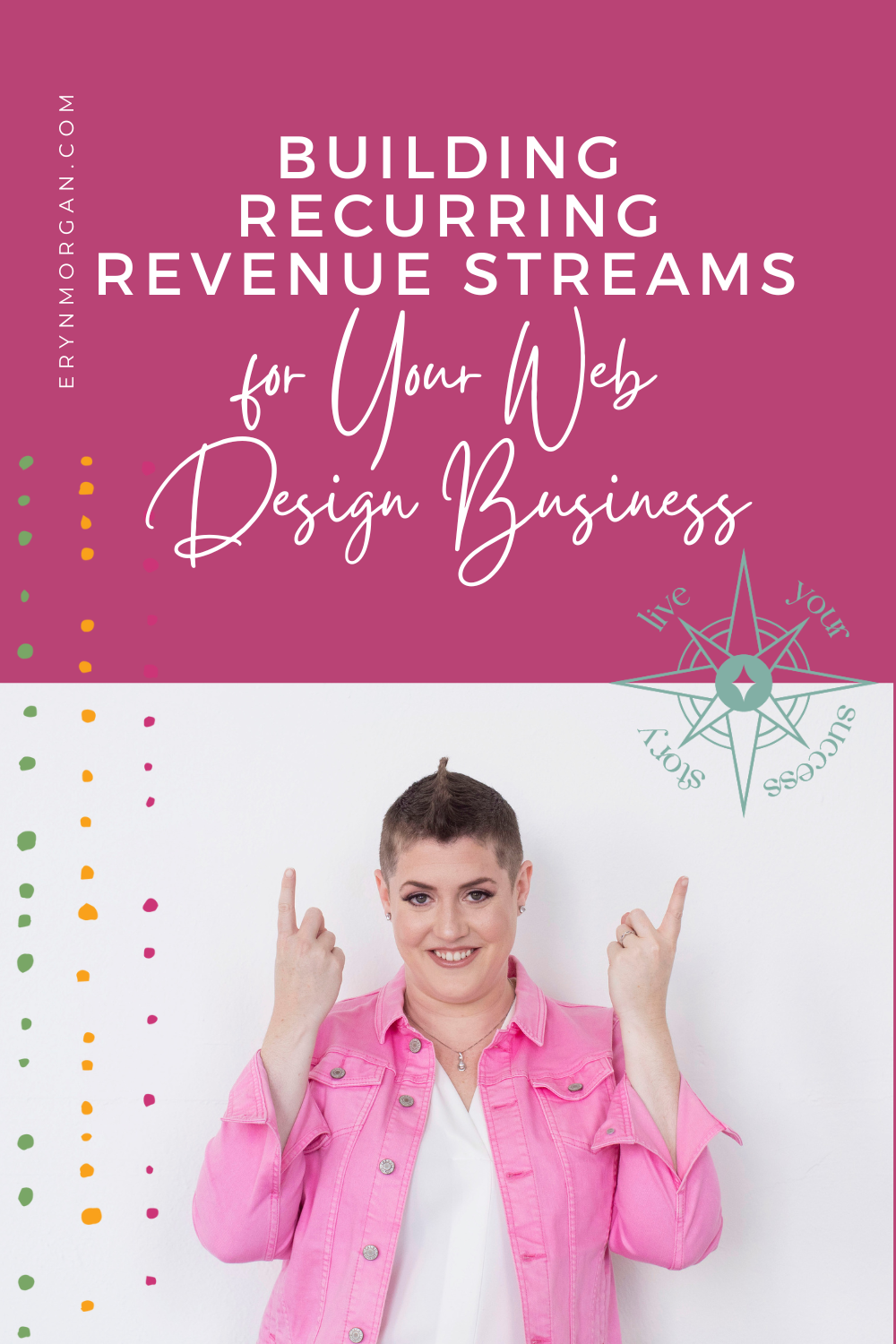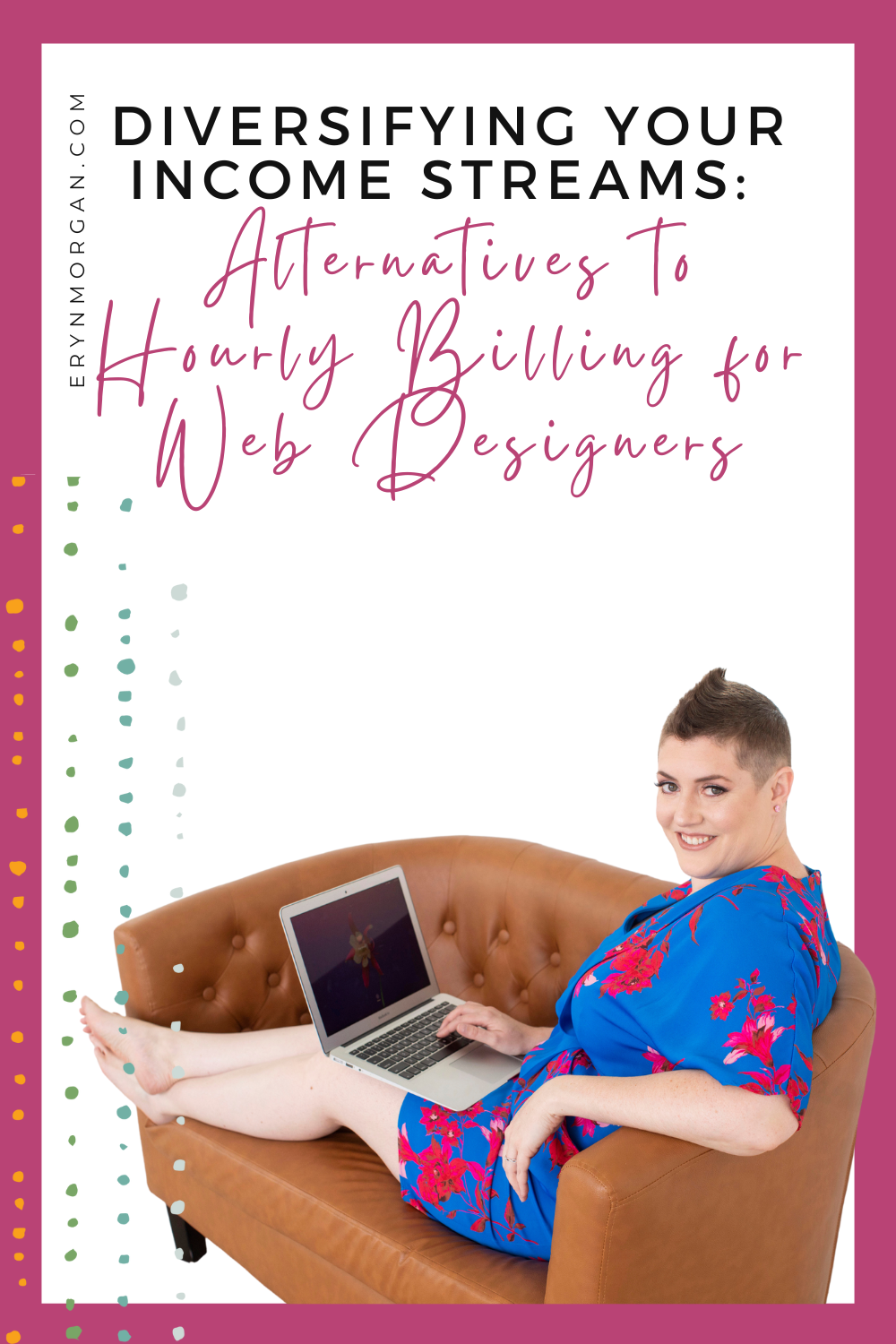What if your pricing became your most confident move?
Picture this: You’ve just sent off a proposal. It’s thoughtful, beautifully structured, and rooted in real value. But instead of spiraling into second-guessing, you feel calm.
Clear. Unbothered.
No more shrinking your rates to get the “yes.”
No more packing your calendar with low-margin projects just to keep the lights on.
Because web design pricing for profit isn’t about throwing a bigger number on the table and hoping it sticks.
It’s about understanding what your work is actually worth—and crafting a structure that supports you as much as it supports your clients.
I wrote this post to be your playbook.
A practical, perspective-shifting guide to web design pricing for profit—so you can build a business that funds your life, honors your talent, and scales with you.
N’s Story: From Hourly Hustle to Pricing Power
Quick story about my client, N
She came to me charging $75/hour and always playing catch-up.
Her design work was beautiful.
Her instincts? Excellent.
But her pricing model was designed for burnout.
We started with her numbers. We had to get clear about what she *truly *needed to earn to feel secure.
Then, we reframed her proposals to focus on the transformation she helps her clients achieve.
We also added a retainer tier to stabilize her income.
And with these simple tweaks and additions, within our first quarter working together, she was pricing her projects 3–5x higher and bringing in more revenue with relative ease.
But more importantly? She was working less—and feeling clear.
Let’s break down what we did.
Why Web Design Pricing for Profit Isn’t Optional
You can be fully booked and still underpaid.
You can hit six figures in revenue and still feel broke.
You can deliver phenomenal results and still struggle to grow.
This is what happens when you price based on fear, comparison, or “what others are charging.”
Or when your pricing strategy is akin to play darts… blindfolded.
Web design pricing for profit means:
- Your prices cover your real expenses—including your salary.
- You’ve built in margin for rest, growth, and reinvestment.
- You stop letting underpriced projects run your schedule—and your life.
This isn’t about squeezing clients. It’s about stopping the squeeze on you.
Because when you are well supported by your business, you’re able to pour into and invest in your client projects.
Essentially, when you invest in you, you invest in others with more joy.
Step One: Calculate Your Real Break-Even Rate
Most designers price from emotion.
They “feel into” what sounds fair.
Or they Google what peers are charging, and match or slightly undercut them, without actually understanding the back end of that business. You never know if you’re copying a financially successful business when you do this, no matter what their glossy instagram feed might have you belief.
Some designers just guess.
But my clients don’t guess, compare, or price based on how they feel.
They price for profit, and to do that, you have to have clarity.
Example:
Start with your direct costs— Those per-project tools, assets, and external collaborators: software licenses, plugins, stock assets, subcontractors, and any hosting fees you cover.
Add your indirect costs— Think about what it actually costs to run your business each month: rent, utilities, software subscriptions, marketing, education, and—yes—your salary.
Then build in your profit margin— This is the part most web designers skip. Profit isn’t extra. It’s essential. Aim for at least 30%—and higher if you’re scaling or managing a team.
📌 Example: If your monthly costs are $7,500 and you want a 30% margin, your minimum revenue needs to be $10,714/month.
N’s real break-even number shocked her.
Her so-called “reasonable” rates were barely covering tools, let alone paying herself consistently. Once she ran the math, the under-earning made sense—and became fixable.
Step Two: Reframe Deliverables Into Tangible Results
Here’s the truth: clients don’t buy deliverables. They buy outcomes.
They’re not paying for five static pages. They’re paying to:
- Attract high-quality leads
- Make sales easier
- Earn trust with credibility
- Save time on manual processes
- Feel confident about their digital presence
So stop selling “design.” Start selling what that design does.
Here’s how to reposition your value:
❌ “You get a homepage and four internal pages.”
✅ “We’ll build a site that makes it easier for the right people to say yes.”
❌ “You get a contact form and mobile optimization.”
✅ “We’re building a stress-free experience—so your clients never hit friction when they’re ready to reach out.”
❌ “Basic SEO is included.”
✅ “This foundation sets you up to rank, grow visibility, and get found by the clients already searching for what you do.”
N implemented these reframes and watched her discovery calls take less time, become more fun, and ultimately, she got more clients.
She didn’t get price push back or discount requests.
People stopped ghosting on proposals.
Things just started to flow.
Step Three: Choose a Pricing Model That Matches Your Profit Goals
There is no one-size-fits-all model. But there is a best fit for your business goals.
Let’s explore the most common models—and how to make them profitable:
Project-Based Pricing
Ideal when you’re delivering a fixed outcome with a clear timeline.
- Scope is locked
- Payment is calendar-based, not milestone based
- Revisions are limited and defined
🧠 Profit tip: Bake your desired profit margin into the total. Don’t “add it later.”
Value-Based Pricing
Best when you can directly connect the investment to ROI.
- You ask smart discovery questions upfront
- You frame your work as results, not tasks
- You price based on the transformation—not time
🧠 Profit tip: Works beautifully for launches, rebrands, or funnel redesigns where the client’s income is impacted.
Retainer or Subscription Pricing
Perfect for ongoing maintenance, updates, audits, and strategic support.
- Predictable income
- Streamlined delivery
- Long-term client relationships
🧠 Profit tip: Define exactly what’s included—and what’s extra. Overdelivering kills profit fast.
N’s business stabilized the moment she layered in a $1,200/month retainer offer.
Clients loved not having to book a new project every time they needed help—and she loved the reliable revenue.
Step Four: Use Strategic Framing to Make Premium Pricing Irresistible
Let’s talk psychology. Because even if your pricing is airtight, the way you present it determines whether someone buys.
Here’s how to shift perception:
Lead with the transformation.
Your site is “your best salesperson,” “your silent closer,” or “your most trusted first impression.” Speak to the result—before the features.
Use high-to-low anchoring.
Start with your most premium offer. It sets the frame. Your next-tier option feels approachable by comparison—even if it’s still premium.
Make the cost of inaction visible.
Ask: “What’s it costing you to delay? What happens if your current site is still up 6 months from now?”
Future pace.
Invite them to imagine a year from now. “How would it feel to have your site finally reflect the quality of your work?”
N used these strategies in her last three consults. All three converted. Two chose her top-tier package.
The Real Reason Web Design Pricing for Profit Matters
This isn’t just about numbers. This is about the business you’re building.
N told me recently, “I’m not working more hours—but I’ve never felt more in control.”
That’s the goal.
When you price for profit, you actually change everything like ripples in a pond.
You start showing up to discovery calls with calm clarity instead of pricing panic.
Late-night revisions and endless project scope creep becomes a thing of the past, because it’s now built into how you run your business.
You learn to say no to clients who don’t respect your process or your boundaries.
And for the first time, your business starts to feel like something sustainable—something that could actually support you for the long haul.
Because when your pricing is profitable, you don’t just make more—you become more of the creative, grounded, in-demand expert you already are.
Let’s not stop here.
Ready to Get Some Support with Pricing?
If you’re ready to make this real—beyond spreadsheets, beyond second-guessing—there are three ways I can help you take the next step.
You can start by downloading The Web Designer’s Pricing Playbook. Inside, you’ll find tangible examples, proven frameworks, and pricing structures you can start using today.
Not sure what’s holding your pricing back? Take the What’s Your Pricing Personality? quiz. It’s fun, fast, and freakishly accurate—and it’ll show you exactly where your mindset is helping (or sabotaging) your profitability.
Or, if you want to skip the guesswork and talk it out with someone who gets it, book a free discovery session. We’ll walk through your current offers, uncover the profit leaks, and map out a smarter model that aligns with your vision.
If this post lit something up for you—don’t let it fade. Follow the spark.
Want more?
- Boosting Your Bottom Line: How to Increase Profit in Web Design
- Alternatives to Hourly Billing for Web Designers
- Recurring Revenue for Web Agencies
Ready to Price with Confidence (and Profit)?
Let’s take the guesswork out of your numbers and build a pricing model that actually supports you. Book a free discovery session with Eryn and let’s make your next move your most profitable one yet.


